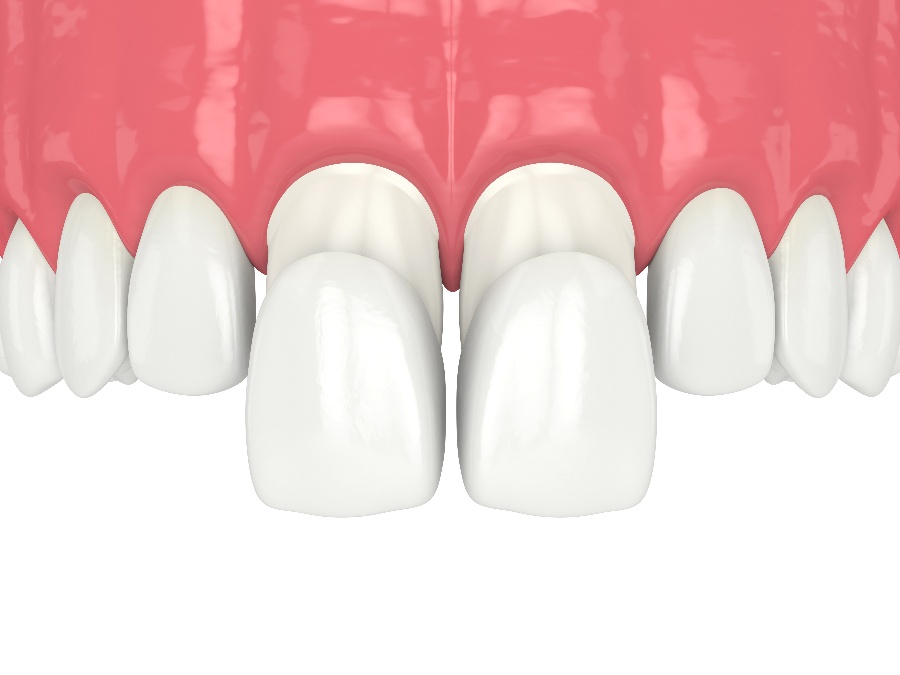Researchers have found that smiling elevates your mood, energizes you, builds stronger relationships, and makes you more productive. People tend to be drawn to those with a big smile who radiate confidence and happiness.
However, a bright smile depends on healthy, white teeth, which can chip, discolor, or wear down. If you experience problems with your teeth that keep you from having a radiant smile, you might benefit from porcelain or composite veneers.
What Is Dental Composite?
Years ago, dentists had two materials to repair damaged teeth with dental fillings. One was dental amalgam, popularly known as silver fillings. However, the placement of amalgam fillings was limited to back teeth due to their metallic appearance. These restorations are used less today due to their mercury content and the advancements in using other materials.
The other restorative material was a dental composite. This tooth-colored resin material was used to restore dental cavities and small chips of front teeth. However, the older resin material was too weak to use on back teeth or severely damaged front teeth. Everything changed in the 1980s when modern manufacturing methods significantly improved the quality of composites.
Here are some things to know about modern dental composites:
- Their strength and durability match those of metal fillings
- Their resistance to fracture allows their use on back teeth
- Dentists can match their color with adjacent teeth for a result similar to porcelain
- Less removal of tooth structure is required than is needed for metal fillings
- Some composite fillings can be repaired without removing the entire restoration
The Difference Between Composite Bonding and Composite Veneers
Composite bonding (dental or cosmetic bonding) is the procedure of placing dental composite material. It is commonly used to restore dental cavities, fill small gaps between teeth, and repair chipped or cracked teeth. Depending on how extensively the tooth is damaged, a dental anesthetic may not even be necessary.
Composite veneers typically use some of the same composite materials as bonding. The difference is that bonding covers a part of your tooth and composite veneers cover the entire surface of one or more front teeth.
The Advantages of Composite Bonding and Veneers
The application and uses of composite bonding and composite veneers differ. Still, both are used to improve the appearance and function of your teeth. Their advantages include:
- Minimal time commitment The procedure typically requires only a single visit
- Minimally invasive Some chipped teeth can be restored with bonding and no removal of natural tooth structure. Likewise, some composite veneers require a slight reduction of enamel without using a dental anesthetic
- Exceptionally convenient If composite bonding or veneers is an option for your treatment, you will not have to wait for a dental laboratory to fabricate your restorations. Your dentist can perform the necessary treatment without taking impressions and making temporary restorations. The final restoration is placed directly in a single visit to match the size and shape of your natural teeth
- Less cost Dental bonding and veneers usually cost less than porcelain or other ceramics restorations
The Difference Between Porcelain Veneers and Dental Crowns
Some front teeth cannot be treated with composite bonding or veneers. This is usually due to more severe damage and loss of tooth structure or discoloration. In these cases, you likely will have the choice of porcelain veneers or porcelain dental crowns. Both cosmetic dental restorations have tremendous potential for transforming your smile.
Dental crowns can be made from gold, metal alloys, porcelain fused to metal, zirconia, and porcelain. Crowns for front teeth are made from only tooth-colored materials such as zirconia, porcelain, and other ceramics. Dental crowns on front teeth are used to restore:
- Severely decayed or broken teeth
- Some teeth after a root canal treatment
- The appearance of misaligned teeth
- Your smile if you need full-mouth rehabilitation
- Further damage to badly worn teeth
Traditional veneers are made of a thin shell of porcelain or other tooth-colored ceramic. The most significant difference between porcelain veneers and crowns is that crowns cover all surfaces of a tooth. Veneers, on the other hand, cover only the front surface to enhance the esthetics of front teeth. Unlike crowns, veneers provide no strength or protection to the tooth. Porcelain veneers offer benefits such as:
- A natural look and feel
- Requires only a thin layer of enamel removal
- Retaining the sides and back of a natural tooth
- Ease of maintenance with brushing and flossing
- Increased confidence with a natural-looking and feeling smile
- Tolerance of surrounding gum tissue
- Stain-resistant
- Excellent color matching potential
Are Porcelain Veneers Permanent?
The Atlantic magazine credits much of porcelain’s rise in popularity to social media. They cite several celebrities who have placed close-up images of their newly acquired white and dazzling smiles after porcelain veneer placement. But, after reading the prices that some of these stars paid for their smile, you might ask, “are porcelain veneers permanent?”
Hip and knee replacements are made to be long-lasting but generally must be remade after ten to fifteen years. Porcelain veneers are also made to last a long time, even decades, if maintained properly. However, eventually, all dental restorations need replacing. The key to extending the lifespan of veneers is practicing excellent daily oral hygiene and scheduling regular dental checkups. Protecting your teeth with an appliance if you clench or grind your teeth can also help prevent chipping or cracking your veneers.
Which Is Better Porcelain or Composite Veneers?
Your dentist may recommend one veneer material over others. But, in some cases, you may have a choice. Here are the benefits of both types of veneers to discuss with your dentist:
Porcelain Veneers Advantages
- Stronger
- Resists discoloring better than composite
- Better color match
- More natural translucent appearance
- More durable with a longer lifespan
- More effective in improving darker stained teeth
- Better results when treating several front teeth
Composite Veneers Advantages
- Usually require a single visit
- May need less tooth reduction
- Cost less than porcelain
Palmetto Dental Arts professionals are committed to helping you reach your oral health goals with the best treatment options. Every case is different and requires special attention to detail that you will find at each Palmetto Dental Arts office.
Schedule an Appointment
Palmetto Dental Arts oral health professionals offer several cosmetic dental options to enhance your smile and improve your oral health. Contact us online or call us to learn more about how we can help you transform your life with a transformed smile.





